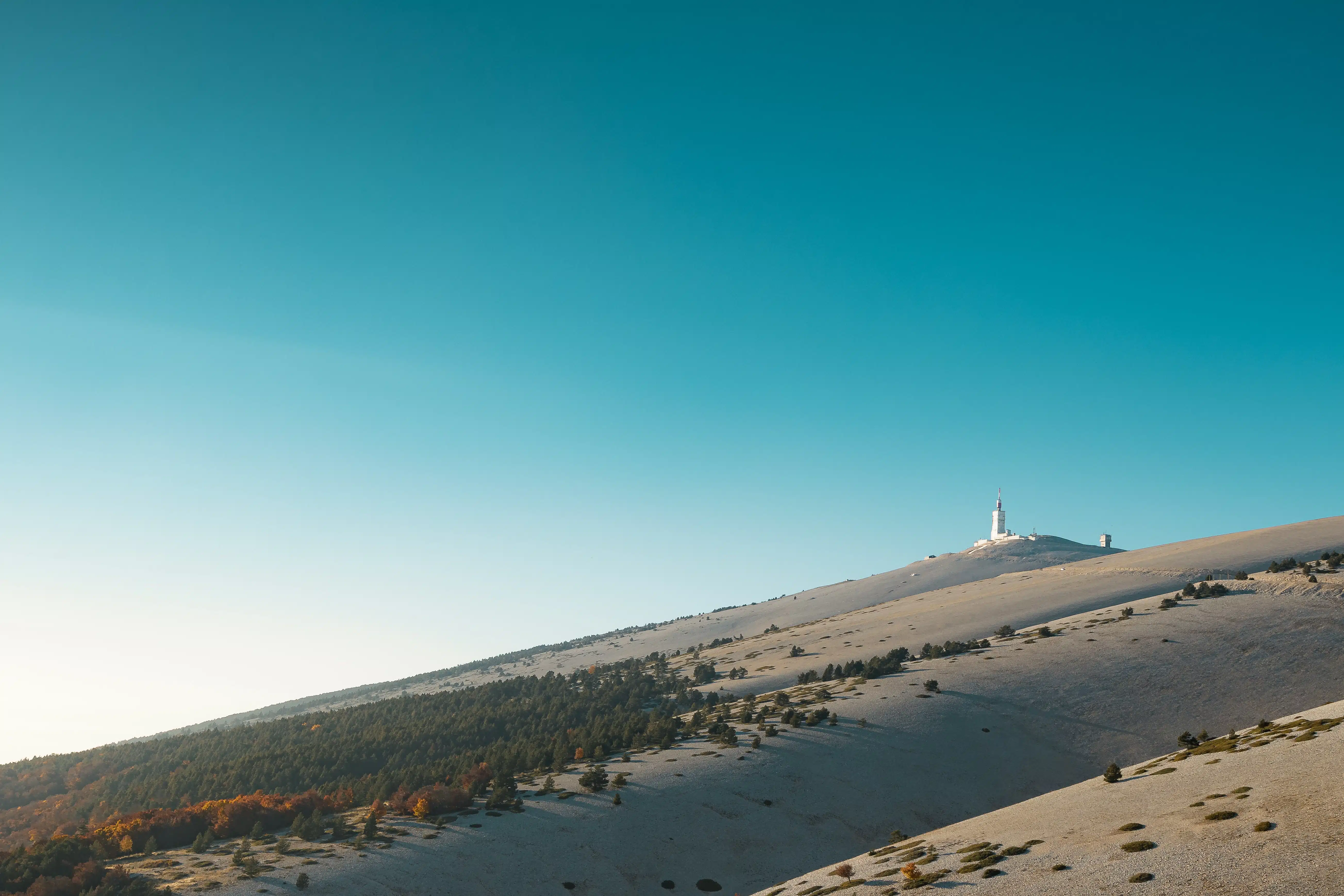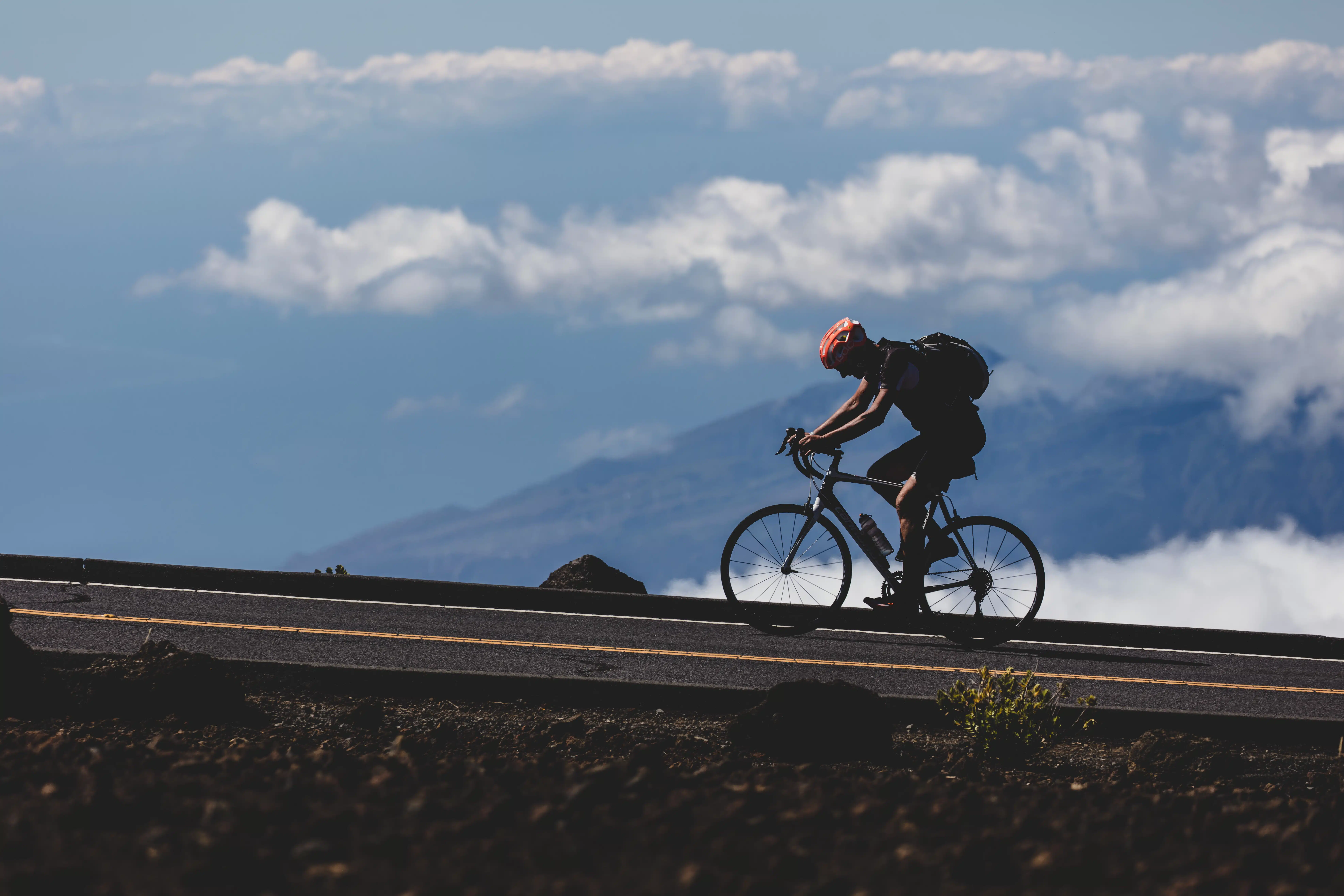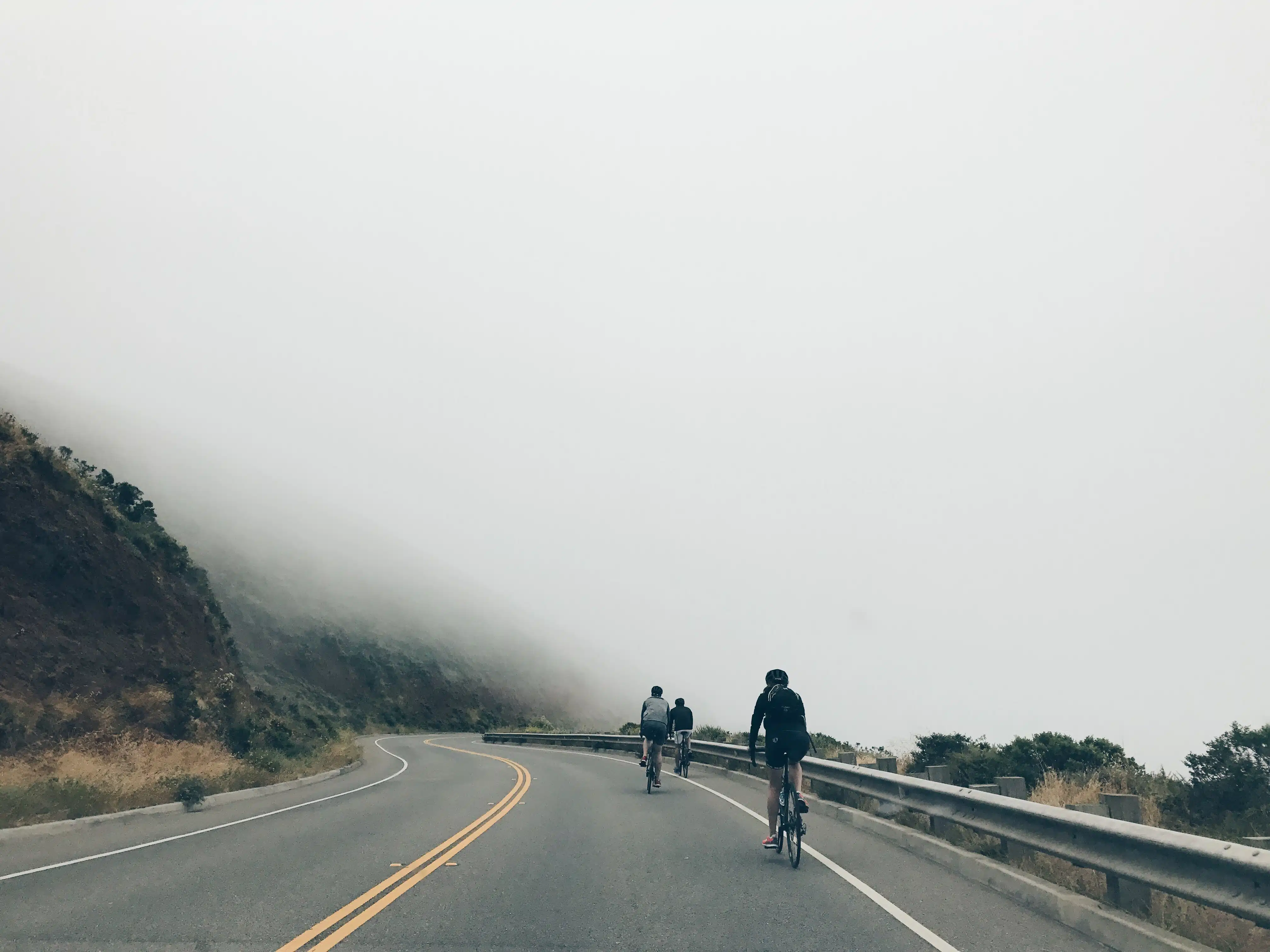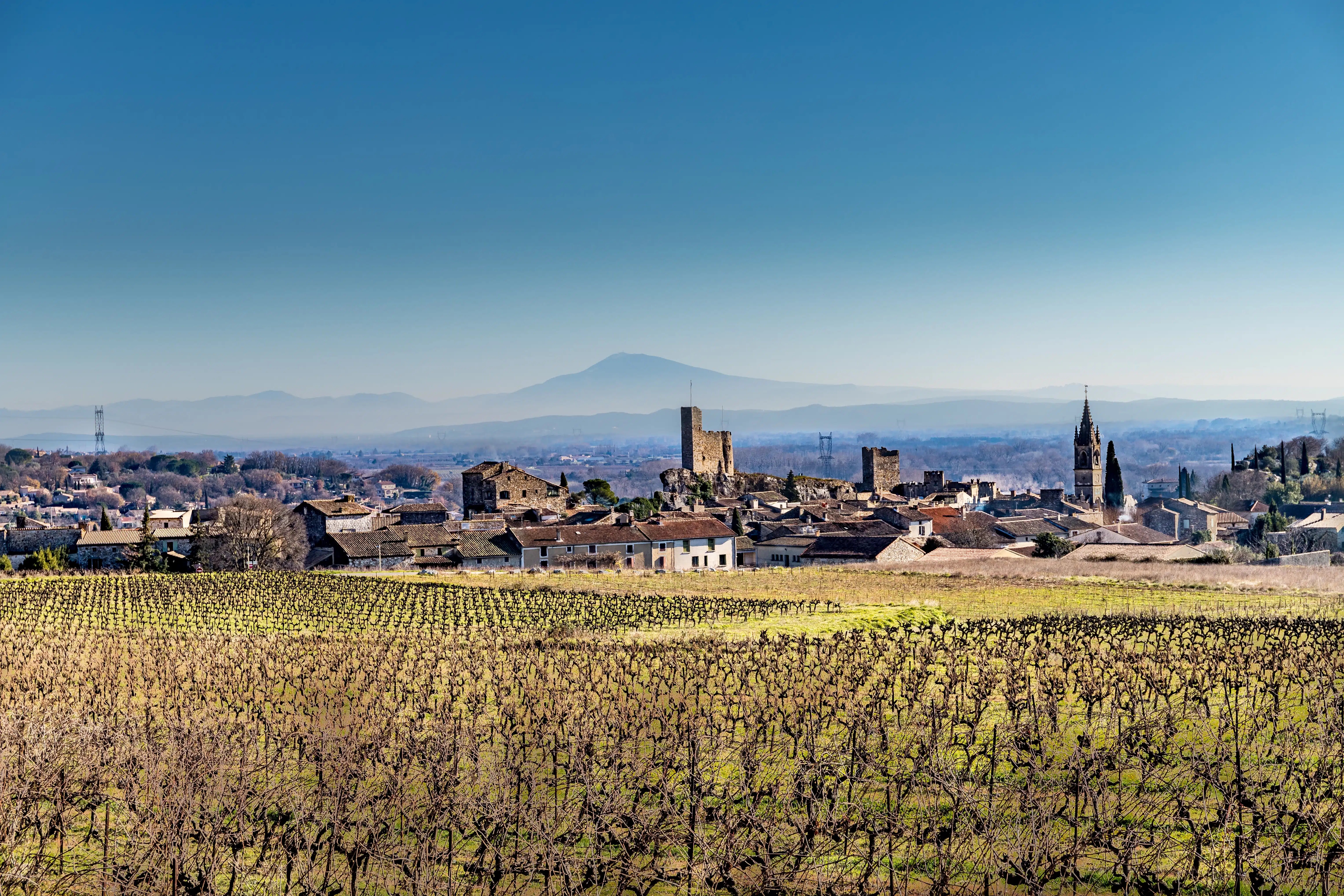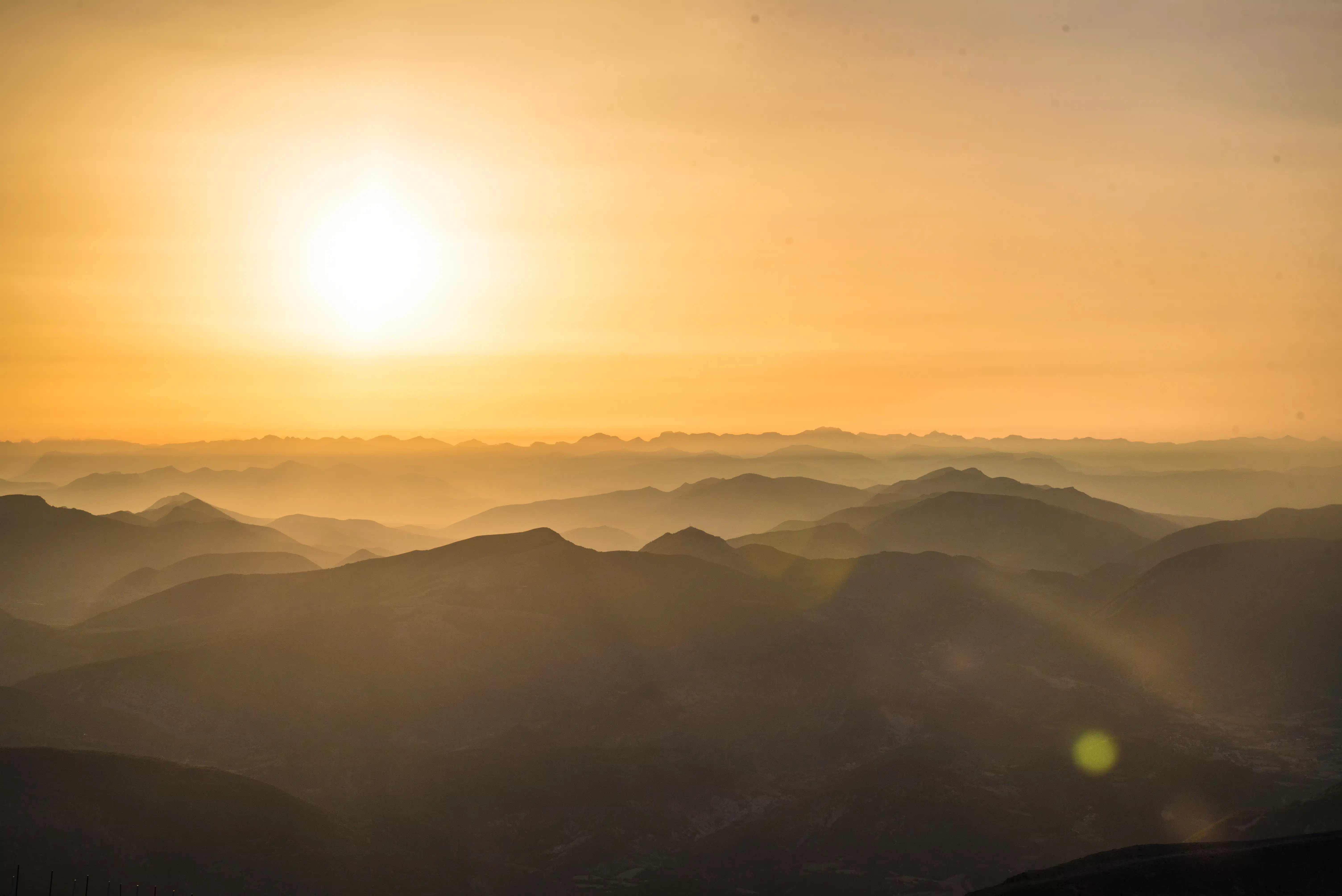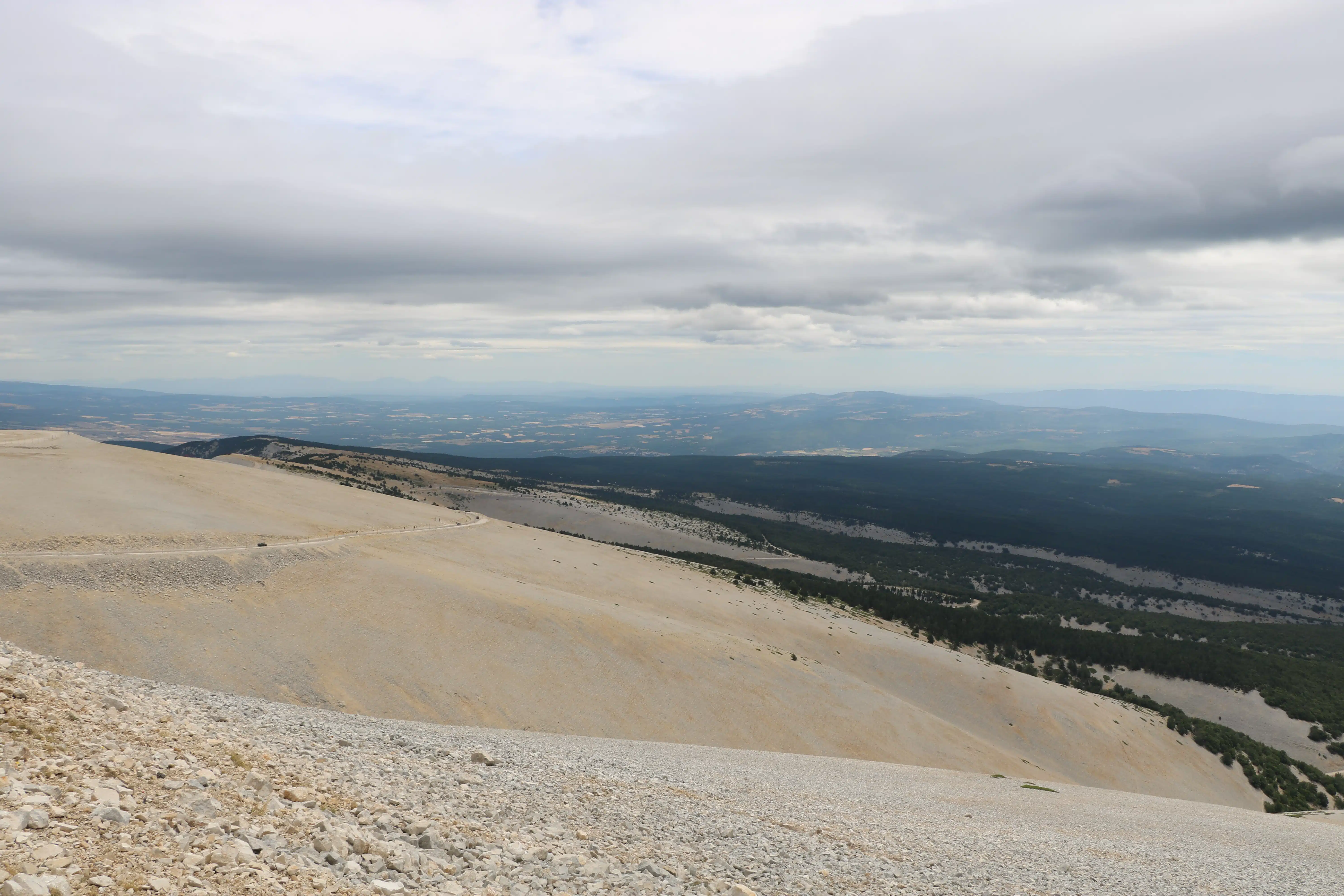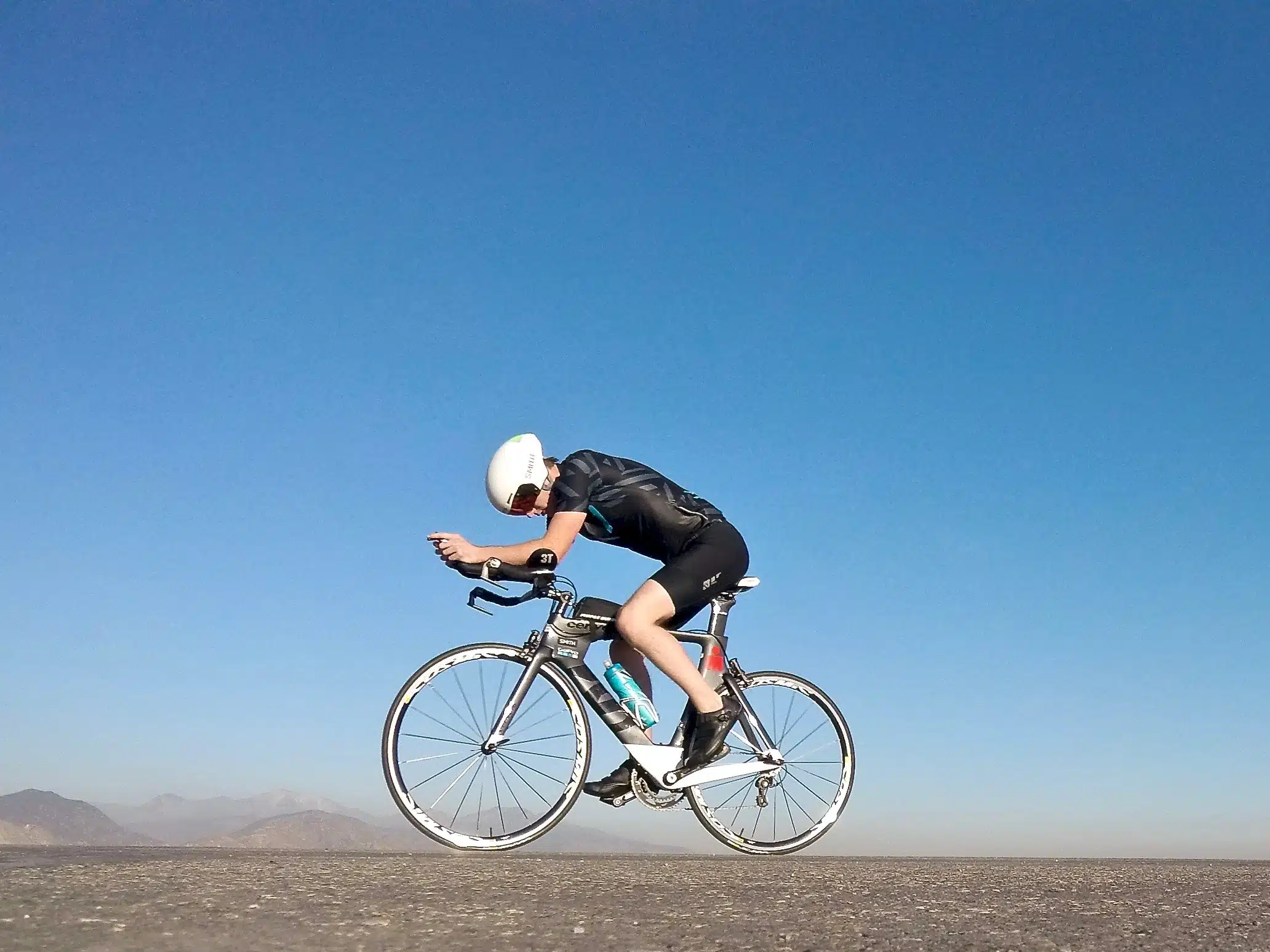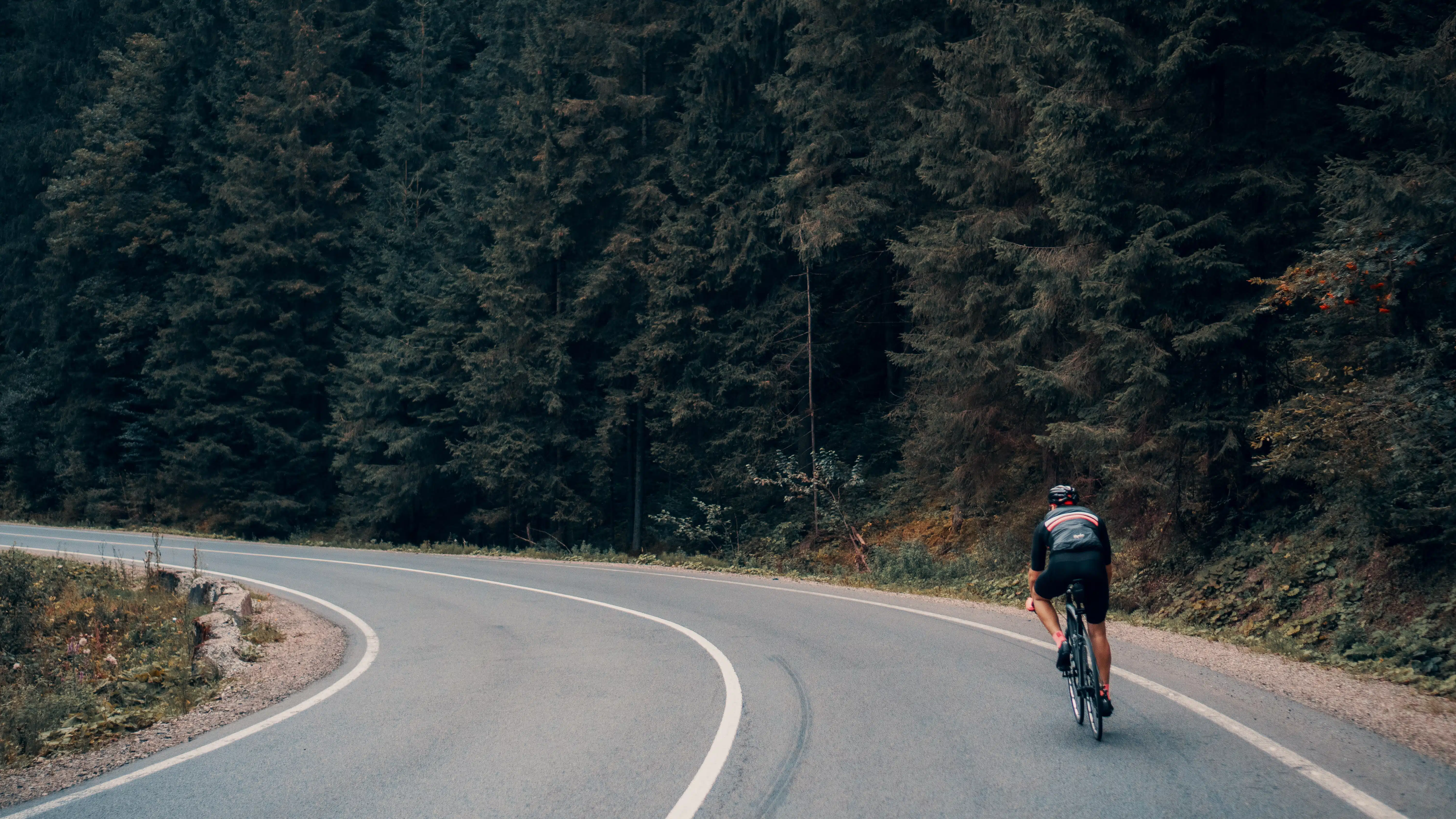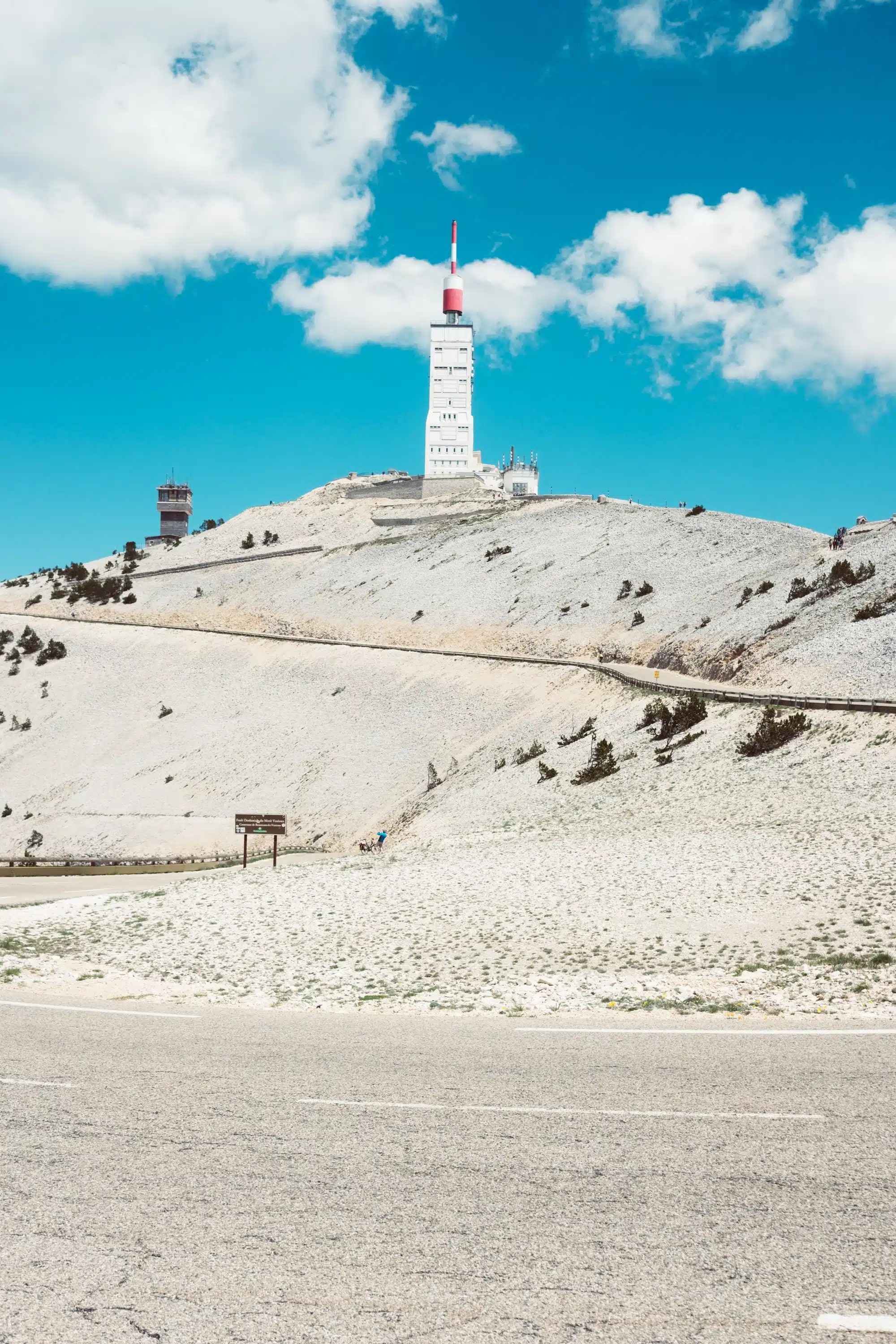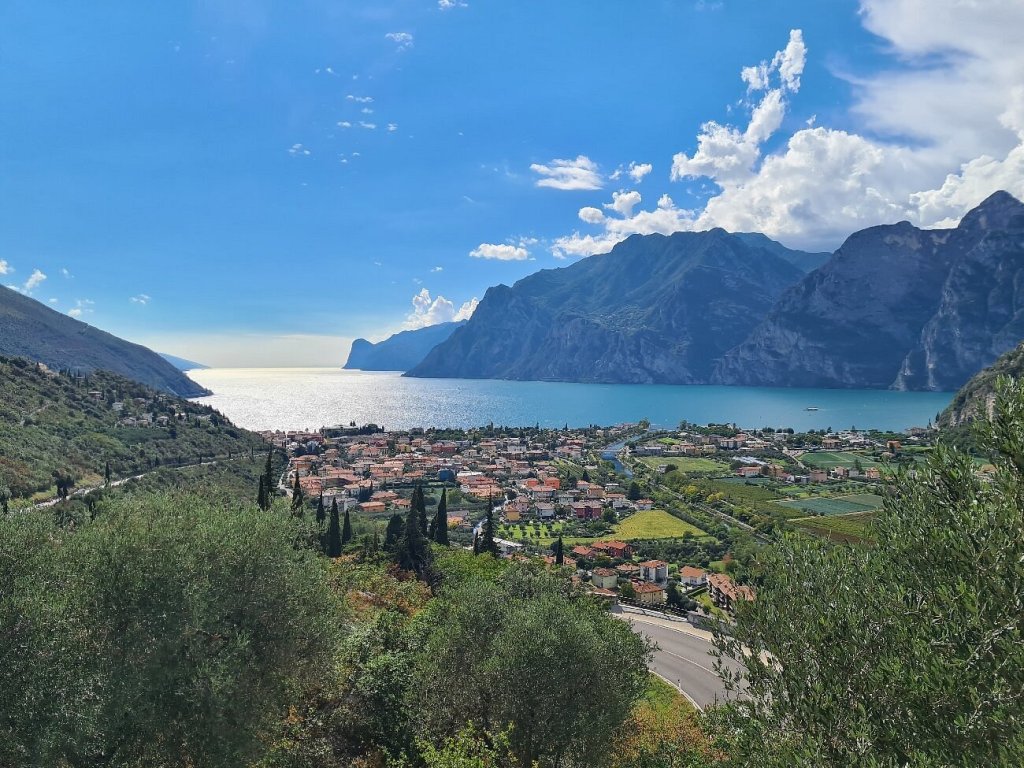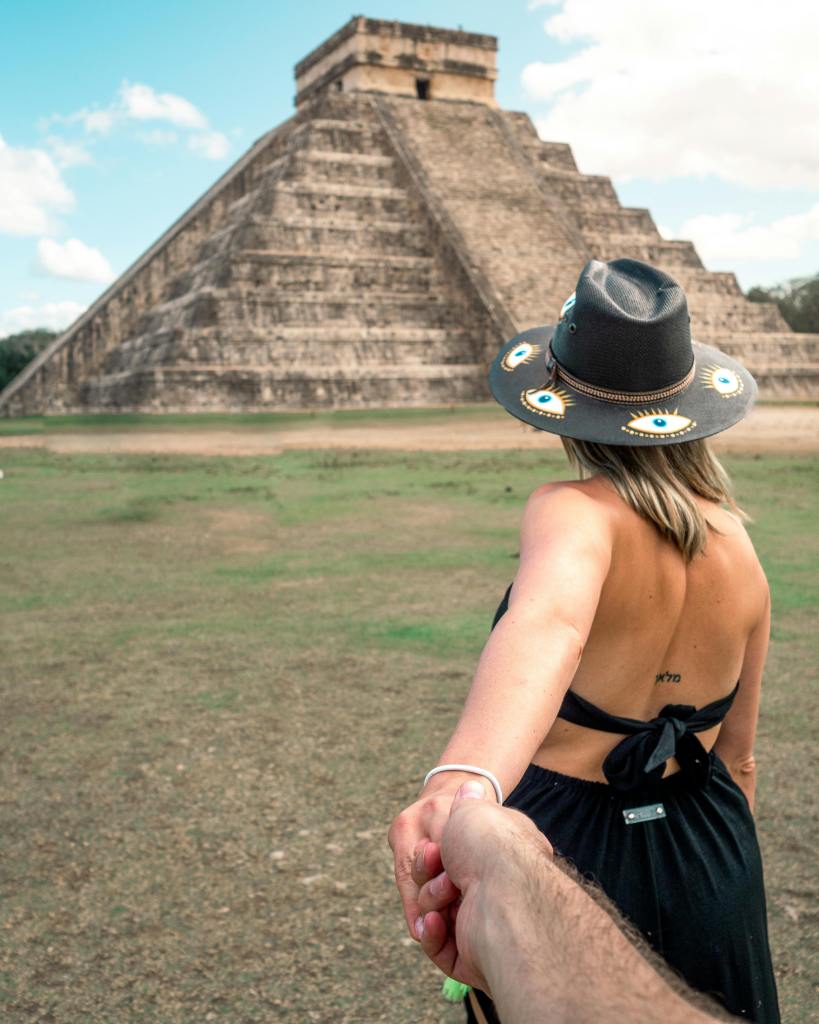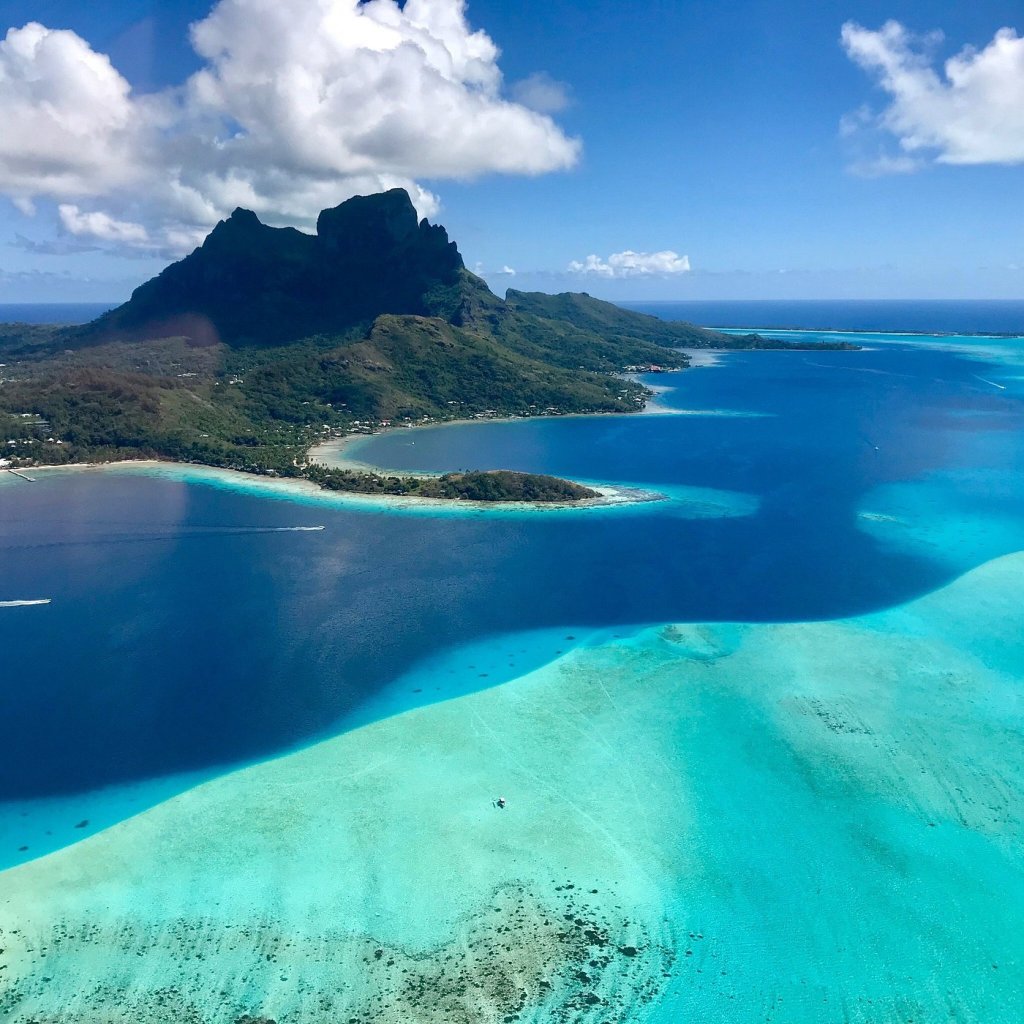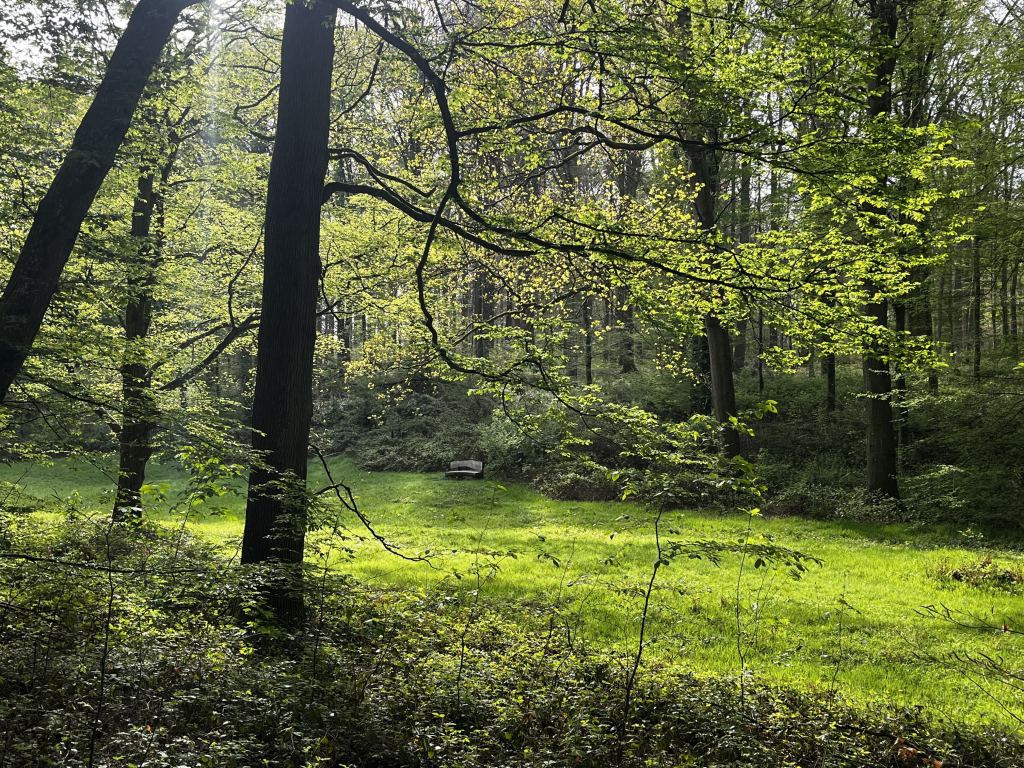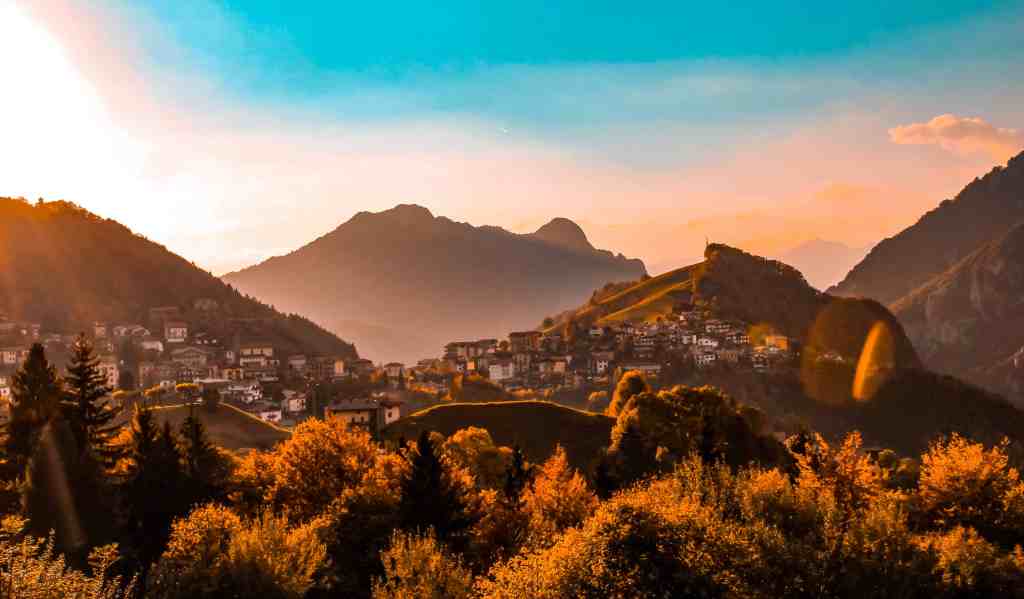As a cyclist enthusiast, I have visited the Mont Ventoux three times, of which I climbed the high mountain twice by bike from all sides.
Below, we’ll answer all the questions I wish I had the answers to when I started my climb by bike to Mont Ventoux.
Want to know what to expect from climbing Mont Ventoux by bike? Check out the video below!
Overview
ToggleGeographical features
Where is Mont Ventoux located, and what is its elevation?
The Mont Ventoux is located in the Provence region of southern France, within the Vaucluse department. It is situated about 20 kilometers (12 miles) northeast of Carpentras and around 45 kilometers (28 miles) southeast of Avignon (if you have more time in Southern France, we highly recommend visiting this city; it’s famous for its art street shows and the cathedral).
The Mont Ventoux has an elevation of 1,909 meters (6,263 feet) above sea level, making it the highest mountain in the region and one of the most recognizable landmarks in Provence. Its shape (the lunar landscape in the last kilometres) has earned it the nicknames “the Giant of Provence” and “Bald Mountain.”
Sporting Events like the Tour de France and Challenges
Mont Ventoux is a popular destination for cyclists due to several reasons:
- Challenging ASCENT: The climb up Mont Ventoux is known for its difficulty, featuring steep gradients, long stretches with a difficult ascent, and the potential for extreme weather. With an elevation gain of over 1,600 meters (5,249 feet) and an average gradient of 7.1%, the difficult ascent provides a formidable challenge for cyclists seeking to test their endurance, strength, and mental fortitude.
- Scenic Beauty: The diverse landscapes and stunning views along the climb make Mont Ventoux a visually rewarding destination for cyclists. Riders can enjoy picturesque villages like Beaumont du Ventoux, lush forests, Chalet Reynard, and sweeping panoramas.
- Cycling Culture: The popularity of Mont Ventoux among cyclists has led to a strong cycling culture in the region, with numerous cycling events, races, and sports events held throughout the year. This community atmosphere encourages cyclists of all levels to visit Mont Ventoux and share in the camaraderie of conquering the high mountain and reaching the summit of Mont Ventoux.
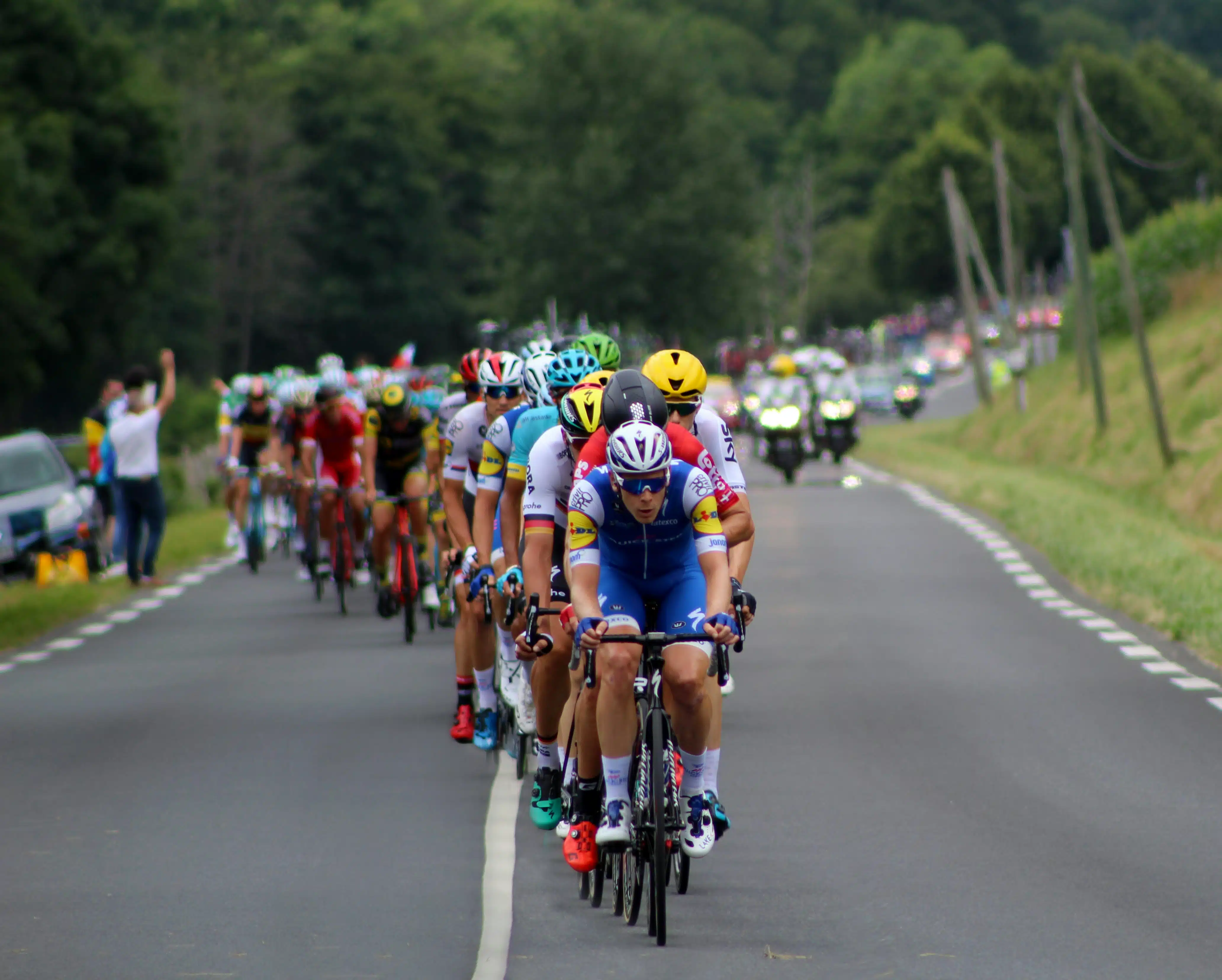
Are there any famous cycling races or events held on Mont Ventoux?
Yes, several famous cycling races and events take place on Mont Ventoux, attracting cyclists from around the world. Some of the most famous ones are:
- Tour de France: Mont Ventoux has been featured as a stage finish in the Tour de France multiple times since its introduction in 1951. The difficult ascent has become iconic in professional cycling, providing some of the most dramatic and memorable moments in the race’s history. The last Tour de France race took place in 2021 when Wout Van Aert won the stage and Jonas Vignegaard dropped Tadej Pogacar.
- Mont Ventoux Denivelé Challenge: This one-day professional road race was first held in 2019 and features a route that starts in Vaison-la-Romaine (a beautiful traditional Romanesque city) and finishes at the summit of Mont Ventoux. The race covers a distance of around 180 km (112 miles) with a total elevation gain of more than 4,000 meters (13,123 feet), making it a demanding event for the riders.
- GFNY Mont Ventoux: The Gran Fondo New York (GFNY) Mont Ventoux is an annual mass-participation cycling event that takes place in June. Cyclists can choose between two routes: a long course covering 130 km (80.8 miles) with an elevation gain of 3,900 meters (12,795 feet) and a shorter course covering 80 km (49.7 miles) with an elevation gain of 2,400 meters (7,874 feet). Both routes include the ascent to the summit of Mont Ventoux, providing an opportunity for amateur cyclists to challenge themselves on this iconic climb.
- Club des Cinglés du Mont Ventoux: While not a race, this informal challenge attracts many cyclists who aim to conquer all three routes of Mont Ventoux from Bédoin, Malaucène, and Sault in a single day. Completing this feat earns the rider membership in the “Club des Cinglés du Mont Ventoux,” which translates to “The Mont Ventoux MADMEN Club.”
Different routes to climb the Mont Ventoux
There are three routes to cycle up Mont Ventoux, each offering different levels of difficulty and unique scenery. Here’s an overview of these three routes:
- Bédoin Route: This is the most famous and challenging route, often featured in the Tour de France. The ascent starts in the village of Bédoin and covers a distance of approximately 21.8 km (13.5 miles), with an elevation gain of around 1,617 meters (5,304 feet). The average gradient is about 7.1%, but some sections have an average gradient of up to 12%. Be prepared for the final push in the last kilometres as these have strong, violent winds (you are on the lunar landscape after all).
- Malaucène Route: Starting from the village of Malaucène (Beaumont du Ventoux), this route is considered the second most difficult ascent of Mont Ventoux. The climb is approximately 21.5 km (13.4 miles) long, with an elevation gain of around 1,570 meters (5,151 feet) and an average gradient of 7.2%. Similar to the Bédoin route, the initial section passes through forests before reaching the more challenging upper slopes. Some parts of this route can also have gradients of up to 12%. After Chalet Reynard (where the “lunar landscape” of the summit starts), the climb is the same as the Bédoin ascent.
- Sault Route: This is the easiest and longest route to the summit, starting from the village of Sault. The ascent covers a distance of about 26 km (16.2 miles) with an elevation gain of around 1,210 meters (3,970 feet) and a gentler average gradient of 4.4%. The first part of the climb is relatively easy, passing through lavender fields and forests. The final 6 km (3.7 miles) merges with the Bédoin route, featuring the same steep gradients and challenging conditions as the other two ascents.
Travel Organisation To Book With
Ventoux & Verdon Gorge Tour: Highlights
Always wanted to climb the Mont Ventoux and cycle in Southern France? Marmot Tours offers amazing tours that make it possible! With expert support, stunning routes, and delicious local cuisine, the Ventoux & Verdon Gorge Tour offers an unforgettable adventure in the heart of Provence. Book your spot today for just £1,690!
- Conquer Mont Ventoux: Tackle one of cycling’s most iconic climbs.
- Explore Verdon Gorge: Marvel at the “Grand Canyon of Europe.”
- Picturesque Routes: Ride through stunning landscapes and charming villages.
- Local Cuisine: Savor delicious Provençal food and wine.
- Expert Support: Enjoy a seamless experience with professional guides and support vehicles.
- Comfortable Accommodations: Relax in carefully chosen hotels.
- Duration: 6 days
- Price: £1,690
Weather and Climatic Conditions
Does the weather vary in Mont Ventoux throughout the year?
The weather on Mont Ventoux varies significantly throughout the year due to its elevation and exposed location.
Here’s an overview of the weather conditions you may encounter on Mont Ventoux during different seasons:
- SUMMER (June–August): Summer is the most popular time for cyclists to ascend Mont Ventoux, as the weather is generally warmer and more stable. Daytime temperatures at the summit can range from 10°C to 20°C (50°F to 68°F), while the lower slopes can be much warmer. However, even during the summer, sudden temperature drops, rain, and strong winds are possible, so it’s essential to be prepared for changing weather.
- Autumn (September–November): Autumn is similar to spring in terms of unpredictability. Temperatures begin to drop, and the chance of encountering rain, wind, and even snow at higher elevations increases. The lower slopes may still have mild weather, but it’s important to prepare for colder conditions in the upper sections of the mountain.
- Winter (December–February): Winter on Mont Ventoux is characterized by cold temperatures, snow, and ice. The summit can experience temperatures well below freezing, with heavy snowfall and strong winds making the ascent extremely challenging and potentially dangerous. The road to the summit is usually closed during the winter due to these harsh conditions. However, the Mont Serein Station is open for skiing!
- Spring (March–May): Springtime on Mont Ventoux can be quite unpredictable, with temperatures ranging from cool to mild. The lower slopes may experience pleasant weather, while the higher elevations can still have snow and freezing temperatures. Rain and strong winds are also common during this season.
Challenges due to the weather conditions
Climbers and cyclists attempting to ascend Mont Ventoux face several weather-related challenges that can make the climb more difficult and even dangerous.
Some of these challenges include:
- Strong WINDS: Mont Ventoux is notorious for its powerful and unpredictable winds, particularly near the summit. Wind speeds can exceed 100 km/h (62 mph) and can make it challenging to maintain balance and control on a bike or while walking. In extreme cases, the winds can force road closures or lead to accidents.
- Rapid weather CHANGES: The weather on Mont Ventoux can change rapidly, with clear skies giving way to rain, snow, or even thunderstorms within a short period. Climbers need to be prepared for sudden shifts in weather conditions and adjust their plans accordingly.
- TEMPERATURE variations: Due to its elevation, Mont Ventoux experiences a wide range of temperatures between the base and the summit. Climbers may start their ascent in warm weather, only to encounter freezing temperatures, strong winds, and even snow or ice at higher elevations. It’s essential to wear appropriate clothing and carry additional layers to adapt to changing conditions.
- SNOW and ICE: During winter and early spring, snow and ice can cover the upper sections of Mont Ventoux, making the ascent challenging and potentially hazardous. Climbers need to exercise caution and may require specialized equipment like crampons and ice axes for safe navigation.
- VISIBILITY issues: fog, low clouds, or heavy rain can significantly reduce visibility on Mont Ventoux, making it difficult to navigate the mountain and increasing the risk of accidents. Climbers should be prepared to adjust their plans if visibility becomes too poor.
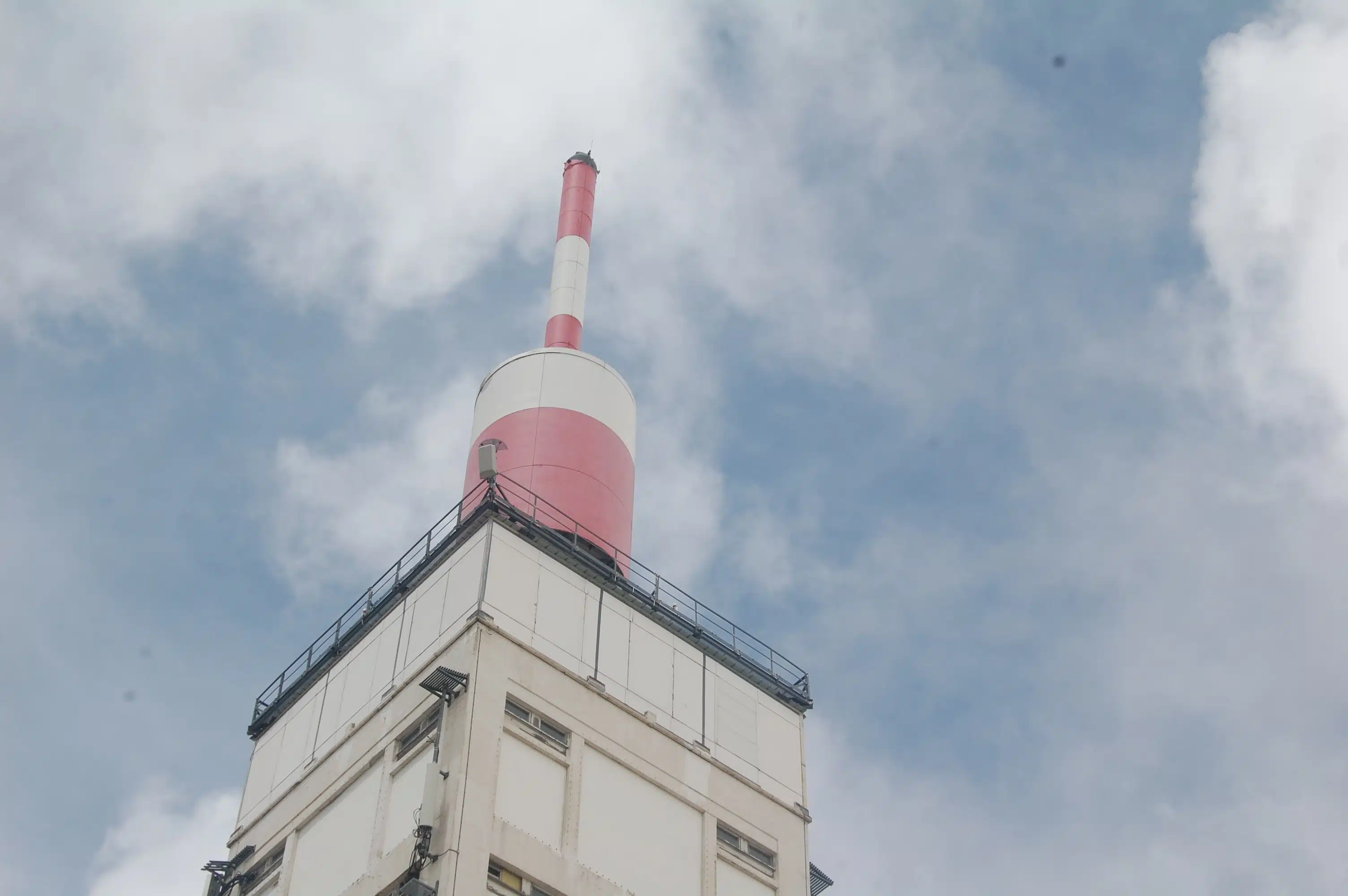
Sightseeing and Attractions
Must-visit viewpoints and landmarks on Mont Ventoux
Mont Ventoux offers several viewpoints and landmarks that are worth visiting during your ascent. Some of these include:
- Chalet Reynard: Located around 15 km (9.3 miles) up the Bédoin route, Chalet Reynard is a popular rest stop for cyclists and visitors. It offers a restaurant and terrace with beautiful views of the surrounding landscape. Chalet Reynard also marks the transition from the forested lower slopes to the barren upper section of Mont Ventoux towards the last kilometres.
- Mont Serein ski station: Situated on the Malaucène route (Beaumont du Ventoux), Mont Serein is a ski resort and recreational area offering various activities such as hiking, horseback riding, and mountain biking during the summer months. The area provides stunning views of the mountain and the surrounding valleys. Access to the Mont Serein ski station (Beaumont du Ventoux via the village of Malaucène) and to the Chalet Reynard station (via Bedoin and Sault) remains possible all year round.
- Gorges de la Nesque: For those approaching Mont Ventoux from the Sault route, the Belvédère de la Nesque is a scenic viewpoint overlooking the Gorges de la Nesque (a 400-meter-deep gorge in the direction of Sault, highly recommended). The Gorges de la Nesque offers breathtaking panoramas of the deep gorge, the river, and the nearby cliffs.
- Memorial to Tom Simpson: Near the summit, there is a memorial dedicated to British cyclist Tom Simpson, who tragically died during the 1967 Tour de France while climbing Mont Ventoux. The memorial is a poignant reminder of the mountain’s challenges and the importance of respecting its conditions.
- Observatory at the summit: At the summit of Mont Ventoux, you will find an observatory and a weather station. The summit itself offers panoramic views of the surrounding landscape, including the Alps, the Mediterranean Sea, and the Rhône Valley. On a clear day, the views from the top are truly spectacular.
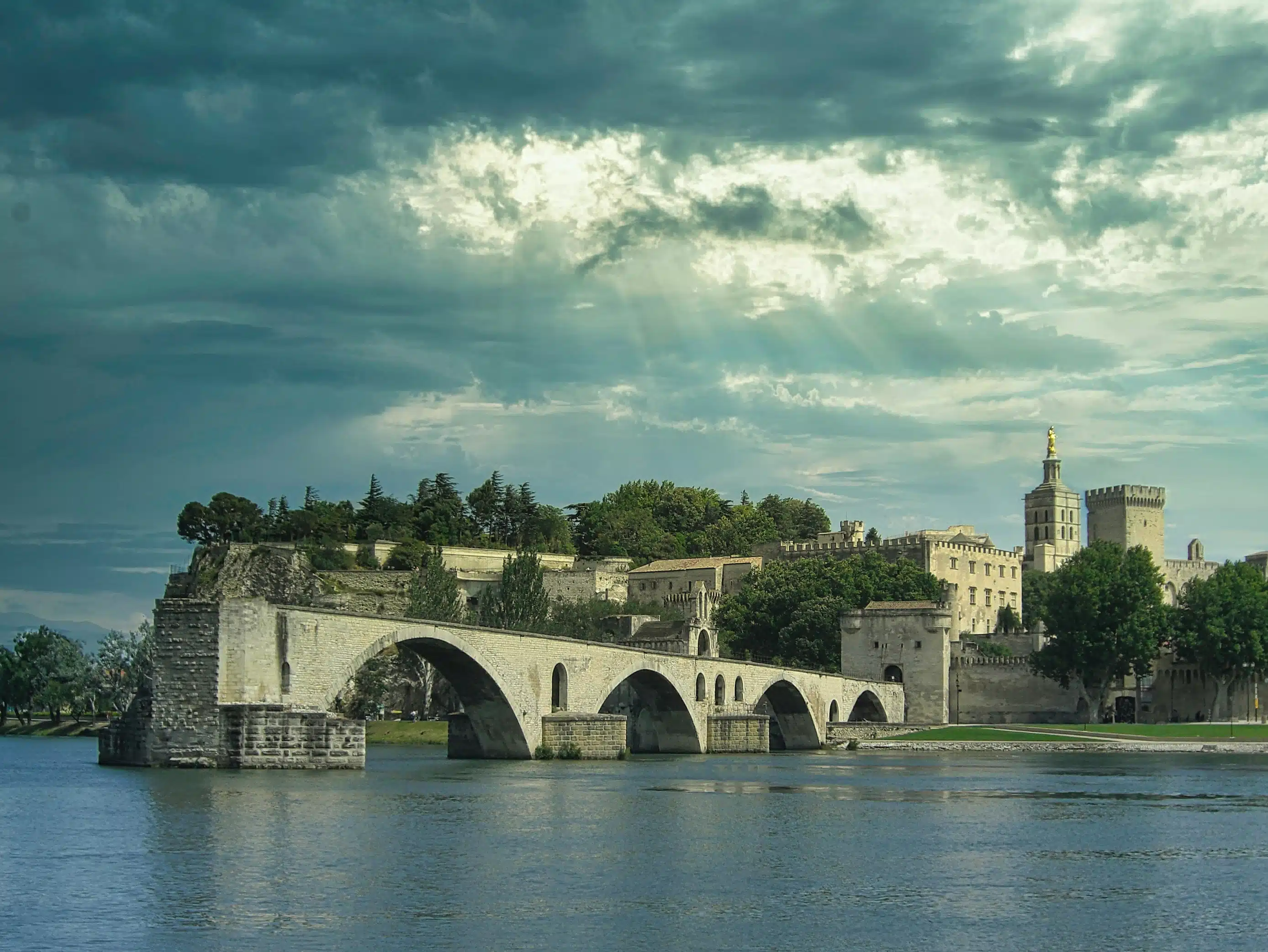
Are there any activities for non-cyclists?
Yes, Mont Ventoux and its surrounding areas offer several unique attractions and activities for non-cyclists to enjoy. Some of these include:
- Hiking: There are numerous hiking trails around Mont Ventoux, ranging from easy strolls to more challenging treks. These trails provide an opportunity to explore the diverse landscape, including forests, meadows, and rocky terrain, while enjoying stunning views of the mountain and its surroundings. One of the most famous hikes is The Dentelles de Montmirail.
- Mont Serein Ski Resort: During the winter months, Mont Serein offers skiing and snowboarding opportunities on the northern slopes of Mont Ventoux. The ski resort features several pistes suitable for beginner and intermediate skiers, as well as a snow park for snowboarders.
- Provencal villages: The area around Mont Ventoux is dotted with charming Provencal villages, such as Bédoin, Malaucène, and Sault. Each village has its own unique character, with narrow streets, historic buildings, and local markets offering regional products like wine, olives, and lavender.
- Lavender fields: In the summer months, the region around Mont Ventoux boasts beautiful lavender fields, particularly near the village of Sault. Visitors can take guided tours, participate in workshops, or simply enjoy the sight and scent of the blooming lavender.
- Wine tasting: The Mont Ventoux region is known for its wine production, with several vineyards and wineries offering tastings and tours. Visitors can sample local wines, learn about the winemaking process, and even purchase bottles to take home.
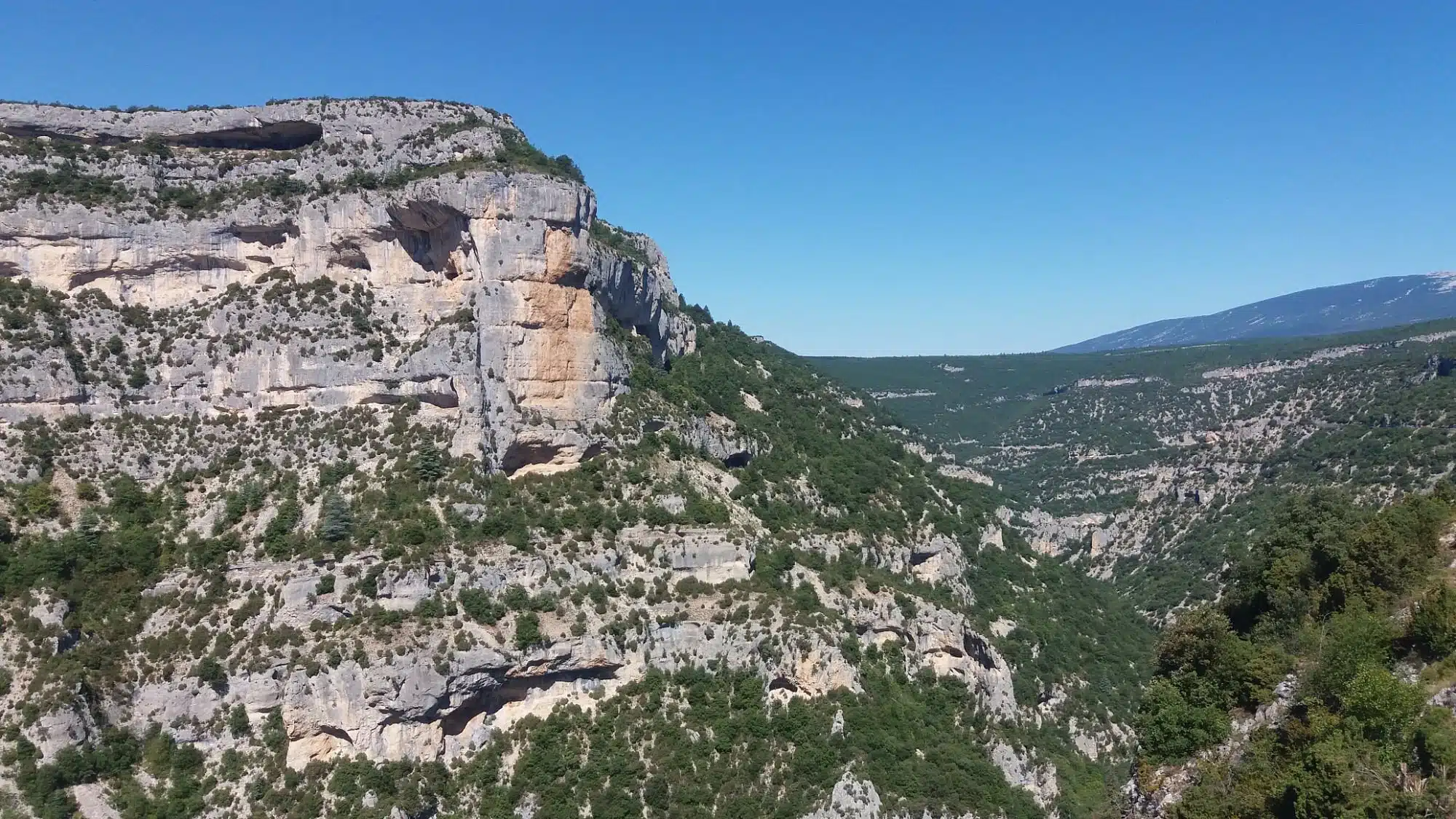
The geological formation of the Mont Ventoux
Mont Ventoux is unique in terms of its geological formation due to several factors:
- Limestone Composition: The mountain is primarily composed of limestone, which was formed during the Mesozoic era when the region was submerged under a warm, shallow sea. Over time, the pressure of accumulated sediments and tectonic activity led to the formation of the mountain.
- Varied Microclimates: The mountain’s height, exposure, and location create a diverse range of microclimates. As one ascends Mont Ventoux, the climate shifts from the Mediterranean at the base to alpine conditions near the summit. This variation results in different vegetation zones, each with its unique flora and fauna.
- Erosion and the “Moonscape”: Mont Ventoux’s upper slopes are characterized by a striking “moonscape” appearance, with barren, rocky terrain devoid of vegetation. This feature is the result of erosion caused by strong winds, rain, and freezing temperatures.
- Fossil Evidence: The limestone composition of Mont Ventoux provides an opportunity for the study of ancient marine life. Fossils found within the mountain’s rocks offer valuable insights into the region’s geological history and the creatures that once inhabited the area.

What are the fauna and flora found on Mont Ventoux?
Mont Ventoux’s varied microclimates and elevation create diverse habitats that support a range of distinctive flora and fauna. As you ascend the mountain, the vegetation zones change, each with its own unique plant and animal species.
- Lower Slopes (Mediterranean zone): The base of Mont Ventoux is characterized by Mediterranean vegetation, including evergreen oak forests, Aleppo pines, and various shrubs such as thyme, lavender, and rosemary. This area provides a habitat for animals like wild boars, rabbits, and foxes, as well as various bird species, including warblers and woodpeckers.
- Mid-slopes (Mixed Forest Zone): Moving higher up the mountain, the Mediterranean vegetation transitions to mixed forests of deciduous trees like beech, oak, and maple, as well as coniferous trees such as Scots pine. The fauna in this zone includes roe deer, badgers, and squirrels, along with birds like the common buzzard, Eurasian sparrowhawk, and various songbirds.
- Upper Slopes (Subalpine Zone): Nearing the summit, the tree line gives way to subalpine meadows and dwarf shrublands, featuring plants like juniper, blueberry, and mountain avens. This zone is home to species adapted to colder conditions, such as the Alpine chamois, marmots, and birds like the rock ptarmigan and Alpine accentor.
- Summit (Alpine Zone): The summit of Mont Ventoux is characterized by its barren, rocky “moonscape” appearance, with sparse vegetation consisting mainly of lichens and mosses. Due to the harsh conditions, few faunal species inhabit this area; however, some birds like the Alpine chough and raptors may be spotted.
The diverse range of flora and fauna found on Mont Ventoux contributes to its designation as a UNESCO Biosphere Reserve, highlighting the importance of conservation efforts to protect this unique ecosystem.
Historical Background and Cultural Significance
What does Mont Ventoux mean?
Mont Ventoux gets its name from the Latin phrase “Mons Ventosus,” which translates to “the windy mountain” in English. The name is derived from the strong and persistent winds that frequently blow at the summit, with gusts sometimes reaching speeds of over 200 km/h (124 mph)
The mountain’s exposed position and unique shape contribute to its windy conditions, making it a fitting name for this iconic peak in the Provence region of southern France.
What is the historical significance of Mont Ventoux in the region?
Mont Ventoux has a rich cultural history dating back to 1336.
- Petrarch’s Ascent: In 1336, the Italian poet Petrarch ascended Mont Ventoux, marking one of the earliest recorded recreational climbs in the history of mountaineering. This climb symbolized the human spirit’s quest for knowledge and understanding, a theme that would later become central to the Renaissance.
- Astronomical Observatory: later, in the 19th century, an astronomical observatory was built near the summit of Mont Ventoux. This observatory contributed to scientific advancements and discoveries in the field of astronomy.
- Tour de France: Mont Ventoux has played a significant role in the world-famous cycling race, the Tour de France. Since its introduction to the race in 1951, the mountain has been the site of many memorable and dramatic moments, including the tragic death of British cyclist Tom Simpson in 1967. The climb up Mont Ventoux is considered one of the most challenging and iconic stages of the race.
Are there any cultural traditions or festivals associated with Mont Ventoux?
While there may not be specific cultural traditions or festivals solely dedicated to Mont Ventoux, the mountain and its surrounding region are home to various events and celebrations that showcase the local culture, history, and natural beauty.
Some of these events include:
- Fête de la Lavande: The Lavender Festival is an annual celebration held in the nearby town of Sault, typically taking place in August. It celebrates the region’s famous lavender production and includes a market, workshops, and live music.
- Les Médiévales du Ventoux: This medieval festival usually takes place in the village of Villes-sur-Auzon in July. It features re-enactments, traditional crafts, demonstrations, and performances showcasing the region’s rich history.
- Wine Festivals: The surrounding region is renowned for its wine production, and several wine festivals occur throughout the year, celebrating the local winemaking traditions. Examples include the Fête des Vins de Caromb and the Ban des Vendanges in Avignon.
- Art and Music Festivals: The Provence region is known for its vibrant arts and music scene. Numerous festivals, such as the Festival d’Avignon and the Rencontres Internationales de la Photographie in Arles, take place throughout the year, drawing artists and visitors from around the world.
Historical and Literary Connections
Did any famous historical figures climb Mont Ventoux?
Yes, one famous historical figure who climbed Mont Ventoux is the Italian poet and scholar Petrarch (Francesco Petrarca). On April 26, 1336, Petrarch ascended du Mont Ventoux as a personal challenge and for intellectual curiosity. You can read his text here.
What is the significance of the “Mont Ventoux” ascent by Petrarch?
This climb has been widely regarded as a symbolic event in European history, marking the transition from the medieval mindset to the more humanistic values of the Renaissance.
In a letter to his friend Dionisio da Borgo, Petrarch described his journey to the summit and the thoughts he experienced during the ascent. He mentioned reading a passage from St. Augustine’s “Confessions” at the summit, which inspired him to reflect on his own life and the pursuit of worldly fame.
Petrarch’s climb of Mont Ventoux is considered a significant moment in the history of ideas, as it symbolizes the shift towards individualism, self-reflection, and the appreciation of nature that would come to characterize the Renaissance period.
Are there any literary works or references to Mont Ventoux in literature?
Yes, there are several literary works and references to Mont Ventoux in literature. Some of the most notable include:
- Petrarch’s Letter: As mentioned earlier, Petrarch’s letter to his friend Dionisio da Borgo about his ascent of Mont Ventoux is a seminal work in literature. This letter has inspired generations of writers and poets.
- “The Ascent of Mont Ventoux” by Joris-Karl Huysmans: This 1889 essay by French writer Joris-Karl Huysmans describes his own experience of climbing Mont Ventoux. Huysmans reflects on the beauty of the landscape and the physical challenges of the ascent while also drawing upon Petrarch’s account of his climb.
- “Le Ventoux” by Yvon Gouaz: This poem by French poet Yvon Gouaz celebrates Mont Ventoux and pays tribute to its unique character, the challenges it poses to cyclists, and its place in the history of the Tour de France.
- “Mont Ventoux” by Bert Wagendorp: This Dutch novel, published in 2013, tells the story of six friends who reunite to climb Mont Ventoux thirty years after they first attempted the ascent. The novel explores themes of friendship, memory, and the passage of time, with Mont Ventoux serving as both a backdrop and a central symbol.
Safety and Preparation
What are the safety precautions for the Mont Ventoux?
To ensure a safe and enjoyable experience, consider the following safety precautions:
- Dress appropriately: Wear suitable clothing for the climb, including moisture-wicking fabrics, and bring additional layers to adapt to changing temperatures. Don’t forget a waterproof jacket, gloves, and a hat or cap to protect against wind, rain, and sun.
- Carry enough water and food. Stay hydrated and maintain your energy levels by carrying sufficient water and snacks during your climb. Keep in mind that there are limited options to refill water or purchase food along the ascent.
- Pace yourself: Mont Ventoux is a challenging climb, so it’s essential to pace yourself and not push too hard, especially at the beginning. Listen to your body and take breaks when needed.
- Carry essential gear: Bring essential gear, such as a basic first aid kit, a mobile phone with emergency numbers, a map or GPS device, a bike repair kit (if cycling), and a headlamp or flashlight in case you get caught out after dark.
- Respect road rules and other users: If cycling, follow traffic rules and be aware of vehicles, pedestrians, and other cyclists on the road. Stay on designated paths and respect the environment.
- Beware of altitude sickness: Mont Ventoux reaches an elevation of 1,909 meters (6,263 feet). Although not extremely high, some individuals may experience symptoms of altitude sickness. If you experience dizziness, shortness of breath, or nausea, consider descending to a lower altitude.
How should you prepare for the Mont Ventoux?
Here are some tips to help you get ready for the climb:
Physical Preparation:
- Build endurance: Gradually increase your endurance through regular cardio exercises such as running, cycling, or swimming. Aim for a consistent workout routine in the months leading up to your climb.
- Strength training: Incorporate strength training exercises targeting key muscle groups used during the climb. For cyclists, focus on leg and core strength, while hikers should also work on upper body strength for steep sections and potential scrambling.
- Hill training: Practice climbing hills or stairs to simulate the ascent. For cyclists, incorporate hill intervals into your training rides. Hikers can use staircases or inclined treadmills to build climbing strength and stamina.
- Train at altitude: If possible, train at higher altitudes to help your body acclimate to the reduced oxygen levels. This will help minimize the risk of altitude sickness during your ascent.
- Rest and recovery: Ensure you have adequate rest days and proper nutrition during your training to allow your body to recover and avoid injuries.
Mental Preparation:
- Set realistic goals. Be honest with yourself about your fitness level and experience. Set achievable goals for your ascent, considering factors such as pace, breaks, and potential weather conditions.
- Familiarize yourself with the route. Research the route you plan to take, including its distance, elevation gain, and notable landmarks. Knowing what to expect can help you mentally prepare for the challenges ahead.
- Develop a pacing strategy. Determine a comfortable pace for your ascent and plan to maintain it throughout the climb. Avoid starting too fast, as this can lead to premature exhaustion.
- Visualize success: Imagine yourself completing the climb, reaching the summit, and enjoying the views. Visualization can help boost your confidence and motivation.
- Prepare for setbacks. Accept that you may encounter unforeseen challenges, such as poor weather or physical discomfort. Develop a plan to address potential setbacks and maintain a positive mindset.
- Practice mindfulness: Incorporate mindfulness techniques, such as deep breathing or meditation, into your training routine. These practices can help reduce stress and improve mental focus during your ascent.
Is there any recommended gear or equipment for climbing Mont Ventoux?
Here are some suggestions for both cyclists and hikers:
For Cyclists:
- A well-maintained road bike with appropriate gearing for steep climbs.
- Helmet, gloves, and sunglasses for safety and comfort.
- Cycling clothing is made from moisture-wicking materials, including padded shorts, a breathable jersey, and socks.
- Layers for adjusting to changing temperatures, such as arm warmers, leg warmers, windproof vests or jackets, and a cap or headband.
- Waterproof jacket and shoe cover for protection against rain.
- Sturdy cycling shoes with cleats compatible with your pedals.
- Two water bottles or a hydration pack to stay hydrated during the climb.
- Energy bars, gels, or other snacks for maintaining energy levels.
- Bike repair kit, including a spare inner tube, tire levers, a pump or CO2 inflator, and a multi-tool.
- Mobile phone with emergency numbers and a portable charger.
- A GPS device or route map for navigation.
For Hikers:
- Comfortable and supportive hiking boots or trail shoes with good grip.
- Moisture-wicking socks keep your feet dry and prevent blisters.
- Lightweight, breathable, and moisture-wicking clothing, including hiking pants, a shirt, and a hat or cap.
- Layers for adjusting to changing temperatures, such as a fleece or insulated jacket, a windproof or waterproof shell, and gloves.
- Backpack with a hydration system or water bottles.
- High-energy snacks and a packed lunch for sustenance during the hike.
- Trekking poles for additional support and stability on steep or uneven terrain.
- Basic first aid kit, including band-aids, blister pads, pain relievers, and any personal medications.
- Mobile phone with emergency numbers and a portable charger.
- GPS devise, compass, or map for navigation.
Conclusion
In conclusion, climbing Mont Ventoux is a challenging and rewarding experience that requires physical and mental preparation, as well as appropriate gear and equipment.
With this ULTIMATE TRAVEL GUIDE you have all the information you need to reach the summit of the Mont Ventoux! Let us know about your experience in the comments!

